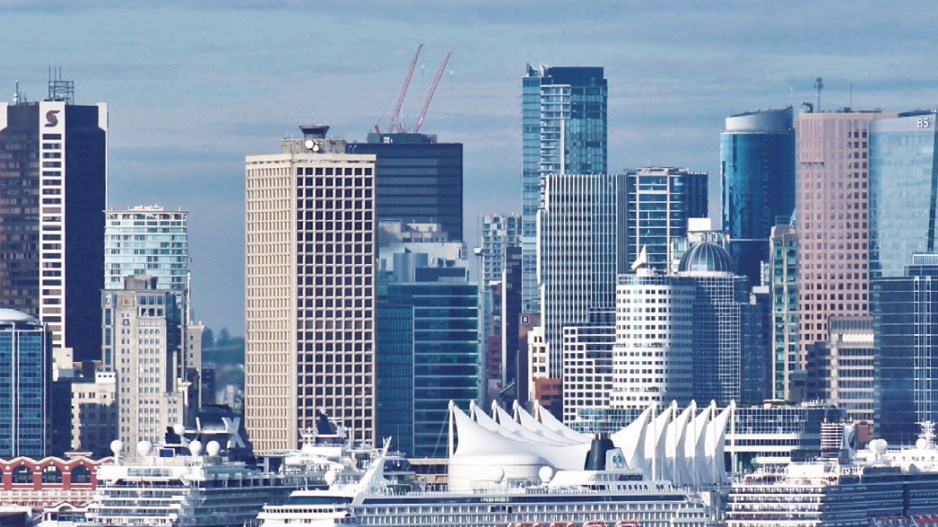Through initiatives such as Port 2050 and globally recognized environmental programs, the Port of Vancouver has its sights set on becoming the world’s most sustainable port. “Among ports, we had a very early start in terms of environmental initiatives,” says Duncan Wilson, vice-president of corporate social responsibility at the Vancouver Fraser Port Authority.
In the 1980s, for example, Wilson says the port was the first in Canada to require mid-ocean water balance exchange, which today is a national standard.
But sustainability is to a large extent a moving target: climates are changing, standards improving and environmental bars being raised around the world. Canada’s largest gateway doesn’t operate in isolation.
“In a global context, we are a small player,” says Wilson. “When we’re trying to advance things under the environmental sustainability pillar, we can move further, faster if we’re working with other ports.”
Last year, the port authority signed on to the World Ports Climate Action Program along with six other authorities in Antwerp, Barcelona, Hamburg, Los Angeles, Long Beach and Rotterdam. The program recognizes the role ports and maritime transport play in producing global emissions, and the role they ought to play in reducing them.
The program will prioritize five areas: supply chain efficiency through the use of digital tools, policy approaches to reducing emissions, developing in-port renewable power solutions, developing commercially viable and sustainable low-carbon fuels for ships, and fully decarbonizing cargo handling facilities.
“It’s an opportunity for us to leverage the experience of others in these areas,” says Wilson.
The initiative is just one of many port-related multi-stakeholder groups focused on environmental and sustainability goals.
The Port of Vancouver is part of the Northwest Ports Clean Air Strategy along with counterparts in Seattle and Tacoma. Vancouver also leads an international project team trying to bring a patchwork of environmental incentive programs under one roof. When it’s operational, it will function like an Expedia.ca for shipping lines booking ports of call.
“Lots and lots of ports around the world have these incentive programs,” explains Christine Rigby, an air emissions environmental specialist with the Vancouver Fraser Port Authority and the port’s point person for the International Collaboration on Vessel Emission Reduction.
“But the questions always come up: how can we make these programs and these opportunities, this infrastructure, be used more effectively to reduce emissions and other impacts?”
The project – which includes the ports of Los Angeles and Long Beach, Transport Canada, the Environmental Protection Agency, the China Waterborne Transport Research Institute and others – ultimately hopes to attract cleaner vessels to participating ports that offer emissions-reducing programs such as shore power.
“Instead of thinking of our own program as its own system, I started to try and think about it as one part of a larger system,” says Rigby. “Instead of looking at it on a one-port, one-call basis, it’s on a route basis.”
Twenty-one hundred kilometres south, the Port of Los Angeles is setting “really aggressive goals” for some of its operations. The port expects its cargo handling equipment and its drayage fleet to be emissions-free by 2030 and 2035, respectively.
This is no small endeavour: the Port of Los Angeles is North America’s largest container port. Between Los Angeles and Long Beach, 17 million 20-foot-equivalent units of cargo come in and out annually, making the ports – which are less than seven kilometres apart – among the top 10 containerized cargo handling ports in the world. Some 17,000 trucks service the ports’ terminals.
“We realize, in our view, that maybe the biggest, most important environmental crisis facing the world today is climate change,” says Christopher Cannon, the Port of Los Angeles’ director of environmental management.
The technology is nascent, he says, but the port wants its diesel fleet to move over to battery, fuel cell or other zero-emission technology.
“If equipment can handle the duty cycle here, it can handle the duty cycle anywhere,” says Cannon. “[We] want to be kind of a test bed for all this type of technology.”
The port is also home to AltaSea: a 35-acre research campus that aims to function like a Silicon Valley for marine innovation, bringing together partners in science, education and business to develop solutions to environmental challenges.
It goes beyond the scope of what one might expect from a port. As does the Port of Vancouver’s award-winning Enhancing Cetacean Habitat and Observation (ECHO) program, says Wilson, which brings together industry and scientists to better understand the impact of shipping activities on whales along B.C.’s southern coast.
Among its achievements is a vessel slowdown participation rate that regularly reaches 90%, a result Wilson says is “fantastic.”
On its path to become the most sustainable port, Vancouver is also looking at and tracking requirements for cleaner trucks, Envision as well as Leadership in Energy and Environmental Design (LEED) building standards, and shore power capability – which is now available for container vessels in two of three terminals.
Greenhouse gas emissions remain a top priority. Wilson says the port has successfully decoupled air emissions from port growth, except when it comes to greenhouse gases. It’s a priority of ports the world over.
“From an air point of view, that’s the biggest challenge.”




